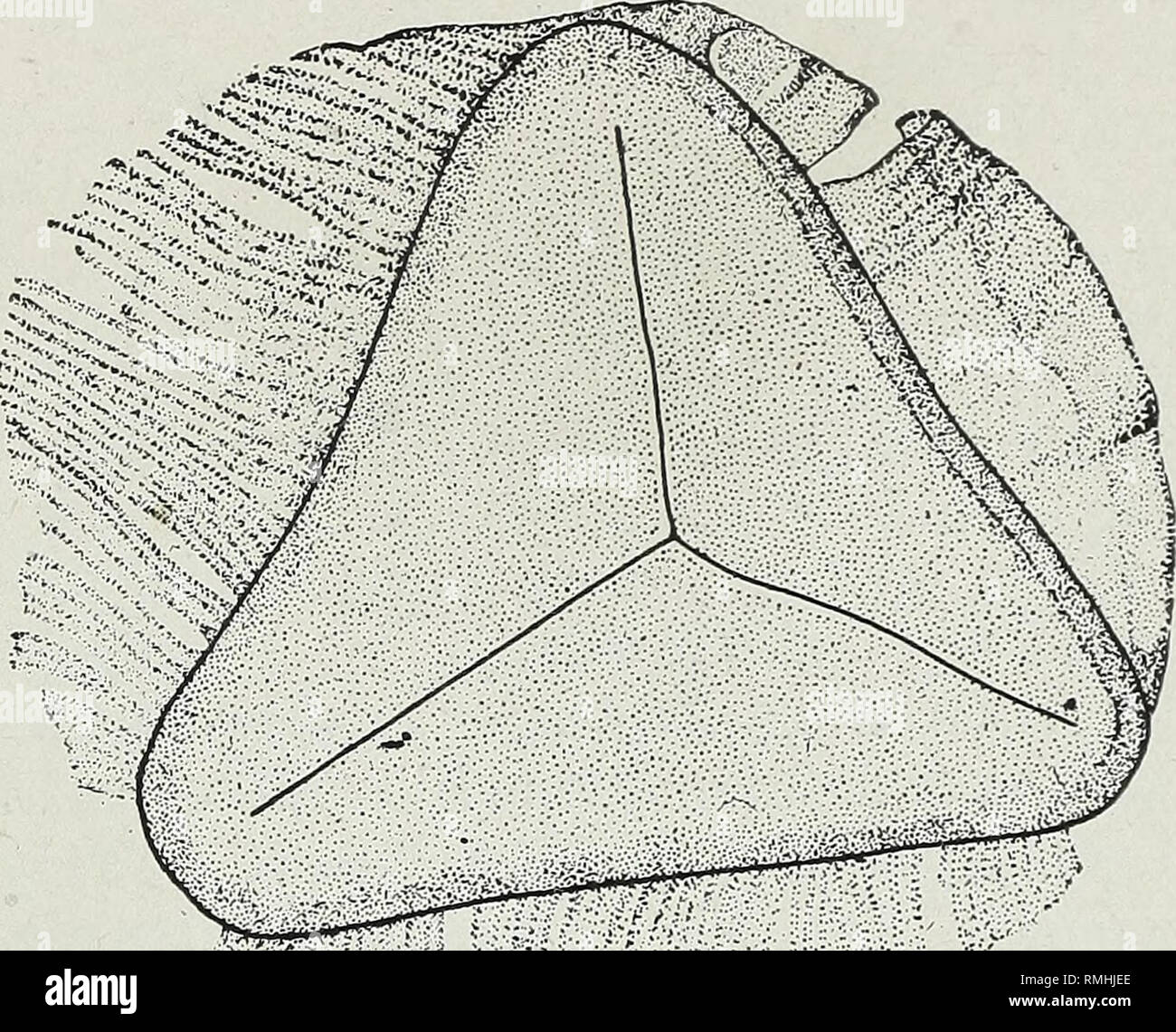. An annotated synopsis of paleozoic fossil spores : and the definition of generic groups. Paleobotany; Plant spores, Fossil; Micropaleontology. REINSCHOSPORA 53 the marginal outline. In some forms the interradial appendages may be dissected into a row of spines, their ends similar to the flange in marginal contour. When compressed, folds are relatively infre- quent due to preferred sedimentary ori- entation parallel to the transverse plane of the spores. Size.—Forms now known range from about 30 to 85 microns in diameter. Ornamentation.—Body smooth to gran- ulose; flange is closely striate to

Image details
Contributor:
Library Book Collection / Alamy Stock PhotoImage ID:
RMHJEEFile size:
7.1 MB (584.8 KB Compressed download)Releases:
Model - no | Property - noDo I need a release?Dimensions:
1757 x 1421 px | 29.8 x 24.1 cm | 11.7 x 9.5 inches | 150dpiMore information:
This image is a public domain image, which means either that copyright has expired in the image or the copyright holder has waived their copyright. Alamy charges you a fee for access to the high resolution copy of the image.
This image could have imperfections as it’s either historical or reportage.
. An annotated synopsis of paleozoic fossil spores : and the definition of generic groups. Paleobotany; Plant spores, Fossil; Micropaleontology. REINSCHOSPORA 53 the marginal outline. In some forms the interradial appendages may be dissected into a row of spines, their ends similar to the flange in marginal contour. When compressed, folds are relatively infre- quent due to preferred sedimentary ori- entation parallel to the transverse plane of the spores. Size.—Forms now known range from about 30 to 85 microns in diameter. Ornamentation.—Body smooth to gran- ulose; flange is closely striate to markedly fimbriate, sometimes so incised as to form a row of apiculae, long in the interradial region and much shorter toward the cor- ners. Haptotypic structures. — Trilete rays well defined and extended nearly to the corners of the spore body; it is uncertain whether the fimbriate flange can be inter- preted as equivalent to an arcuate ridge since, contrary to usual arcuate ridge de- velopment, it is least evident opposite the ends of the rays. Reinsch has illustrated forms with granules in rows paralleling the trilete rays; these may have a hapto- typic origin, and might be equivalent to arcuate ridges in mode of formation. Spore coat.—Moderately thin (less than 3 microns) and of uniform thickness ex- cept at the equator where it is joined by the flange. Affinities.—Unknown ; possibly filicin- ean. The similarities in morphology sug- gest that this is a group having natural significance. It may be related to Granu- lati-sporites. Remarks.—The genus is reported from central Russia by Reinsch (1884, his di- agnoses 62-66, incL), from the Ruhr by Loose (1934), and from Lower Pennsyl- vanian coals of Tennessee by Bentall. Dolgner (1932, pi. 28, fig. 4) has illus- trated a form with marginal spines, from Moscow brown coal, which is congeneric with our interpretation of Reinschospora; Brokaw has recently found somewhat similar forms in the coal of the Bogota cyclothem